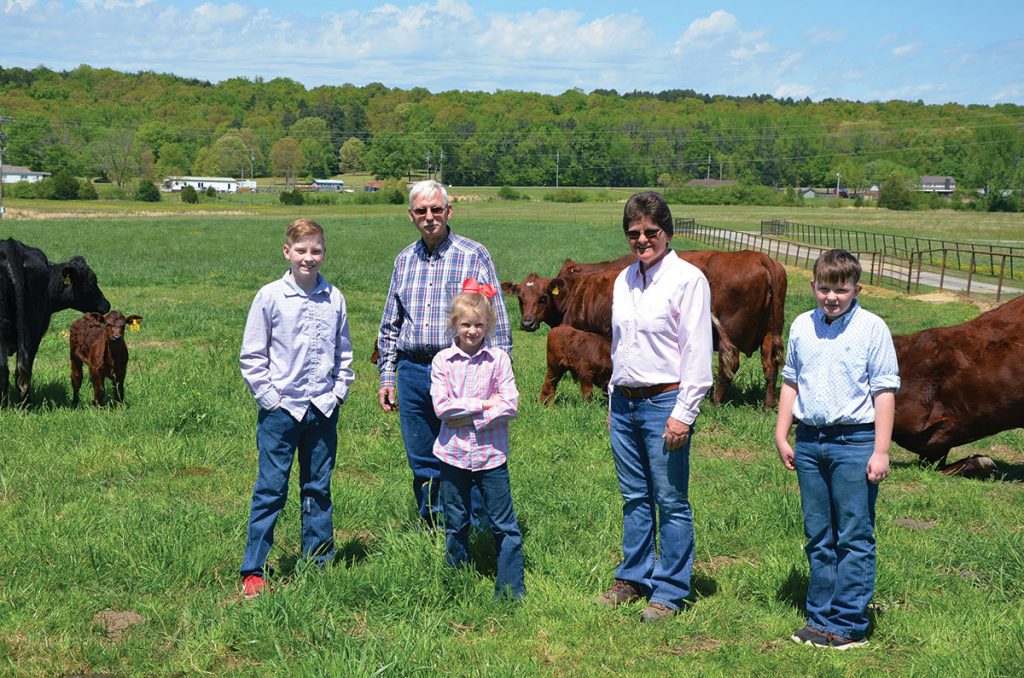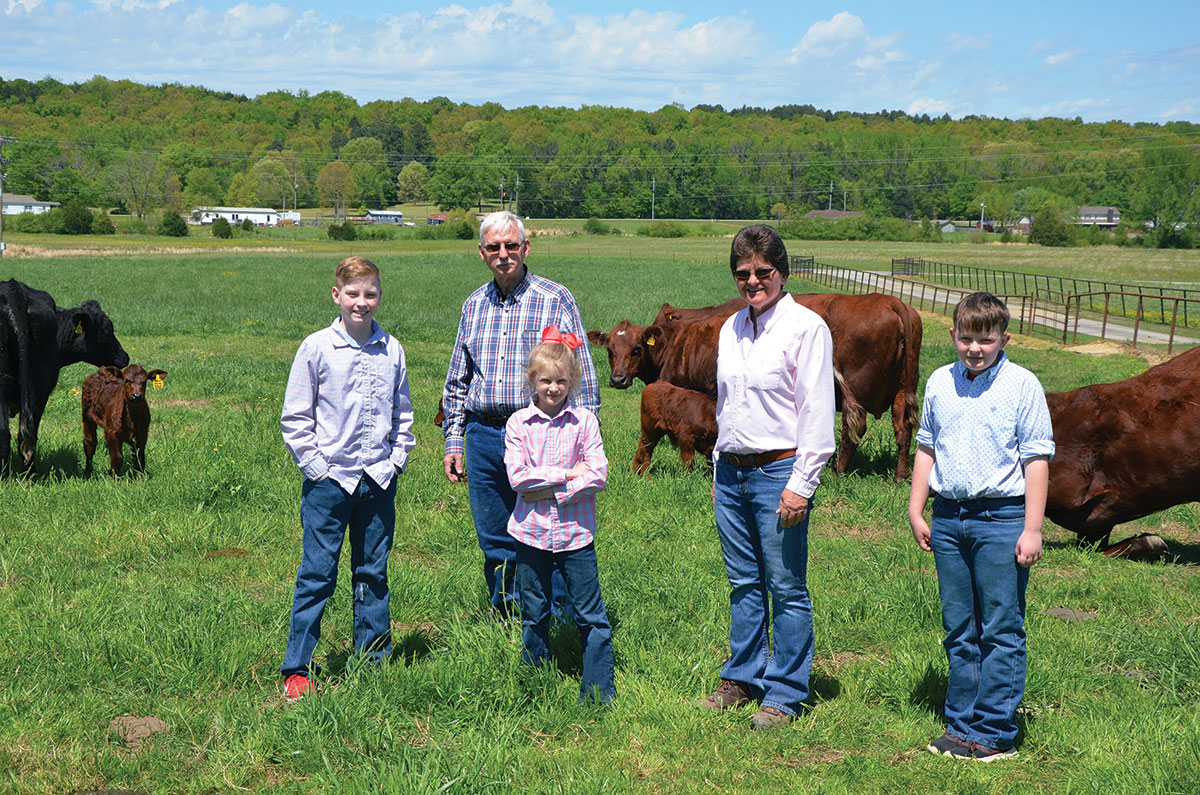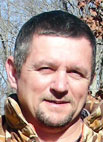
Ouida Crossey has managed her family’s cattle operation since 1980
Lester and Ouida Crossey of Searcy, Ark., started in the cattle business after they married in 1980.
Ouida managed their ranch, Flying C Ranch, and it grew to 170 acres, with the initial acreage coming from Ouida’s family’s farm. Over the years, Lester and Ouida accumulated more family land through inheritance and buying land from her brothers’ shares when they moved away to pursue their careers. The 500 acres is in several locations. The furthest is 5 miles away with their twins, Thomas and Michael, having homes on Lester and Ouida’s original acreage and son Daniel on a different farm.
“We wanted to raise cows and my brothers didn’t. The arrangement has worked out for everyone’s benefit,” explained Ouida.
Ouida works full time on their ranch, running more than 250 head of Santa Gertrudis and Hereford cattle. Lester continued his career in the Arkansas Air National Guard. After 33 years of service, Lester retired as a lieutenant colonel and continues his instructor career with CAE (Canadian Aviation and Electronics).
Lester and Ouida have five grandchildren, ages 5 through 15, with some of the grandchildren participating in showing at various fairs. The ranch maintains several show cattle and steers from both spring and fall breeding seasons, which provides show stock of different ages so the grandchildren compete in different classes.
Lester grew up in North Little Rock and graduated high school in Cabot. Though born in Venezuela, South America, where her father worked for Exxon, Ouida was raised on an Arkansas farm. Her parents, Joe and Maria Fincher, returned to the United States in 1960 and raised cattle, milo and soybeans.
“I’ve always liked cows and was never afraid of them. I remember being about 6 and feeding cattle out of my hand,” Ouida said. “I also fondly remember going with my dad in the 1970s to the well-respected Winrock Farms to look at Santa Gertrudis cattle for the first time. My dad started raising Santa Gertrudis and now we do.”
The Cosseys sell bulls, show cattle, and open and bred heifers through breed sales and by private treaty, in addition to selling beef on the rail.
The Cossey herd contains 130 registered Santa Gertrudis, Herefords and commercial cows used as embryo recips.
The ranch has four bulls: two Santa Gertrudis and two Herefords. Lester and Ouida have tightened their genetic line and use some line breeding to preserve the genetics they have developed. Their main breeding bull, Savage, is a product of that line breeding and produces exactly what Ouida is looking for.
“I have a picture in my head of what I want and select and breed to match that picture, a moderately-sized animal with a clean sheath, deep bodied, and a wide base,” explained Ouida. Savage produces really nice calves.”
One of their earlier bull calves, FC Pistol 28/0, is now one of the top bulls in the breed. He was sold with the conditions that he wear the Cossey brand and they retain an interest in his semen production. Those genetics are still being used in the Santa Gertrudis herd.
The females are divided into four groups, two Santa Gertrudis and two Hereford. Savage breeds the largest group made up of the best Santa Gertrudis cows. The other groups are bred through AI and ET with Ouida performing the AI and implanting the embryos, although the cows are flushed and the embryos frozen elsewhere.
“My AI produces about 80 percent fertility while ET, as is typical, has a 50 to 60 percent fertility rate,” Ouida explained. “I try twice, and if that doesn’t work, I turn them out with a Hereford bull. Though ET is more expensive, the results are worth the time and money.”
Because the Cossey land is in different locations, the home place serves as a maternity ward. The result is specific and frequent rotation so spring and fall calves are born where Ouida can keep a close eye on them.
“Our cows are so used to moving from farm to farm, they come running when they see the trailer and almost jump in,” Ouida laughed.
The working pens are also located at home, with Ouida doing almost all of the vet work and seeking help only when she feels she’s in over her head. She uses a strong vaccination protocol, pulls calves and administers epidermals. Flies are treated through free-choice medicated mineral supplemented and supported by pour on when needed. The herd is wormed twice a year by alternating both method and chemical. She has been advised by her vet to worm only once a year and only those animals that look like they need treatment, though she admits she’s not quite brave enough yet to try.
“One time we were asked to take samples of 10 percent of our herd as part of a company’s data collection,” Ouida said. “I did that but none of our samples had any worms. Worms just have never been an issue for us.”
Ouida mixes her own feed with the basic show mixture being comprised of corn gluten, corn and cottonseed hulls, with molasses added to help control the dust. Then that ration is adjusted by adding more corn for the steers. The cows are fed straight corn gluten during the winter. Lactating cows receive 5 pounds per day and dry cows 2 to 3 pounds.
Ouida is not a fan of ponds so her animals drink well and rural water. When Ouida and Lester first started farming, they drilled two wells with one right near a barn. They only had to go 25 feet to find water and the man drilling the well went another 5 feet because he thought the well would not keep producing at that shallow depth. To test it, he started pumping out water but the well never went dry.
Ouida produces her own hay. Two neighbors have her maintain their land, so she produces and keeps the hay. She also has 200 acres of hay fields. She sprays for weeds first and then uses commercial fertilizer because she finds chicken litter too expensive. Soil tests are taken every other year so she knows exactly what is needed to maintain good grass production. The pastures are Bermuda and fescue, with buttercups being the main problem She also over seeds with ryegrass on pastures away from their home.
Ouida has two young men who help her. Chase Yarbrough began working at a farm store after graduating from high school. The concrete made his feet hurt and he wanted another job. He mentioned that to Ouida who promptly offered him a full-time position working for her. However, Chase is not enough help during the summer, so Ouida contacted the FFA in Searcy where the advisor searched for students wanting work. He sent Garrett Sheppard to Ouida. Though still in high school, Garrett works when not in school or practicing and playing football. He is especially helpful during haying season.
“Good help is essential and I’m lucky to have those two young men,” Ouida said.
Lester and Ouida believe they have an enviable life. Lester is still involved in aviation and Ouida is surrounded by her beloved cattle. Having family so close by and sharing time with them completes the picture of a perfect rural life.







